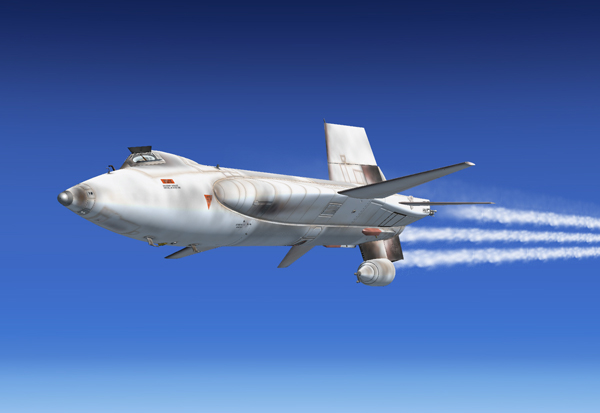
Before landing, the remaining propellants are dumped overboard.
- Head restraint [8, fig. 4-3] – STOWED (up position).
- Eyelid handle [6, fig. 4-3] – FORWARD (eyelid open).
- Retractable pitot handle [80, fig. 5-1] – PULL (OUT).
While approaching the landing site, the remaining propellants must be jettisoned from the X-15 to minimize fire or explosion hazard upon landing and to lower the weight of the aircraft. To jettison the remaining propellants from the X-15A-2 airplane before landing or after an aborted launch, proceed as follows:
- Propellant source pressure gauge [69, fig. 5-1] – Check.
- Vent, pressurize, and jettison control lever [11, fig. 5-4] – JETTISON. Fuel jettison will be conducted concurrently on all three systems (liquid oxygen, ammonia and hydrogen peroxide).
- Jettison stop switches [59, fig. 5-1] – JETT. In the spot plane exterior view, check for vapor emitting from the three jettison ports, at the back of the X-15 aircraft. Propellant jettison can also be monitored on the X-15A-2 SE system monitor panel.
- Vent, pressurize, and jettison control lever [11, fig. 5-4] – After propellants are jettisoned, move control lever to VENT.
Note: The liquid oxygen [5, fig. 3-2] and ammonia jettison ports [8, fig. 3-2] are the long tubes protruding at the back of the airplane's side fairings (each side of the engine compartment). The hydrogen peroxide jettison port [10, fig. 3-2] is located inside the lower speed brake compartment.
See also:
Engine controls
Engine indicators
Propellant Supply System
Turbopump Propellant H2O2 System
